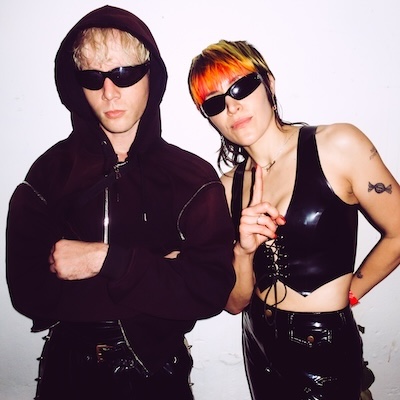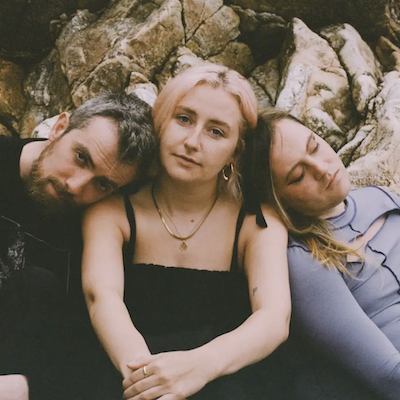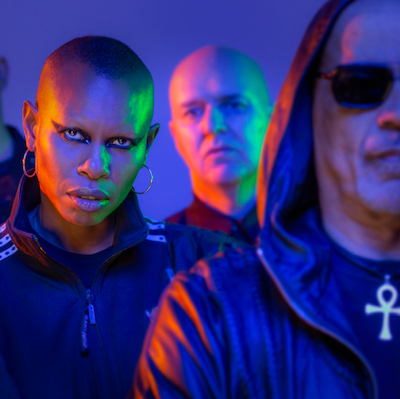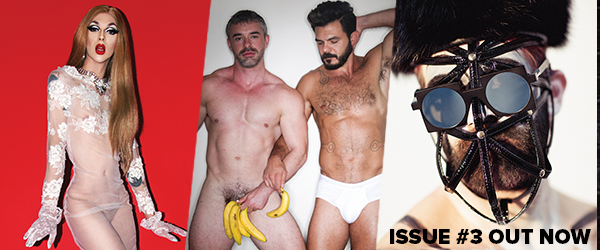
Loverboy sat down with electronic artist and producer Brian Suarez to reflect on everything from his early days in New York’s DIY music scene and scoring an Electroclash hit with “Taboo” to his current songwriting and DJ successes as Allies for Everyone. From live performances featuring surprise stripteases to handmade party flyers and AI mishaps, Suarez shares the moments that shaped an artistic identity defined by a distinctly human and organic approach to technology. Through it all, there’s a through line of intuition, experimentation, and a refusal to overthink. What follows is a refreshingly honest glimpse into a mind that’s always been a little ahead of the mix….
There’s something special about late ’90s and early 2000s New York…
It was a mess. An absolute mess—in the best way. You could do anything you wanted, and it was super fun. I was always nervous, but people took that as aloofness, which actually fit the scene, so I did fine. You could try anything—any kind of performance—and people were into it. And there weren’t phones. No one was looking at a screen. I used to carry a little recorder on the dancefloor to capture songs and figure out what they were later. It was dirty. Nothing was polished. That’s what made it great.
How did you first start making music during that time?
I started even earlier—back in high school in the ’90s. I didn’t really make music in college, but after, when I had my first apartment, I had a keyboard and a friend came over. We made a song for my answering machine and I thought, this sounds good—I should try to make a record. So I got and learned Reason, made some CDs, and sent them to a bunch of German labels. Most got in touch, and I met with my two favs that happened to be coming to NYC around that time, and that’s how it started. It was fun. It felt easy.
Did they release your music just as it was?
Almost. There was some constructive feedback from the label. And at that time, an artist would get an advance while working. Then the label would push the release and recoup that money. It was a nice system. Now, it’s a bit less nurturing. Labels tend to want tracks “release ready.” That can be fun too, but it’s different.
Was “Taboo” one of the songs from that time?
Yeah. That was one of the early ones. It was a jam. Really silly and fun. I didn’t have a proper mic, so we plugged in my DJ headphones and recorded vocals through that. I was like, “That’ll work. It’s fine.”
Were you thinking about Electroclash or the ’80s when you made it?
I was just making stuff. I didn’t think about influences until someone asked later, “What’s your music like?” Then I realized, oh, it comes from this and this. But at the time, I was just doing it. No overthinking.
You started out performing live, not DJing, right?
Yeah, I wasn’t DJing at all during the Electroclash stuff. I was doing live performances of my own songs. DJing didn’t interest me yet. Performing my own music was great because people were there specifically to see you. So if things got messy, it was fine. Later I got tired of rehearsing and dragging gear around. But I had friends who were always down to rehearse and do it for fun.
Do you remember a favorite gig from that era?
I have a lot of favorite gigs from that era. There was a spot in Williamsburg that had parties like Berliniamsburg and Mutants at Lit. We rolled in with red eye makeup, matching outfits, and a little choreo.
One night, I had a friend join me for a song. I had to announce to the crowd, “If anyone is taking pics and recording, can you please stop. This is my little brother’s substitute math teacher, she is about to strip and dance for you, and we don’t want a record of this.” The people recording happily stopped and we went about the song. I’m the only one that has that tape.
Did DJing change how you made music?
Definitely. But it’s only in the last year or two that I’ve started making music that cohesively fits into my DJ sets. Before, starting around 2012, I started a new project and made vocal-heavy stuff—and other people would DJ it. But it didn’t fit my sets.
So now currently I try to do more dancefloor-friendly versions or remixes. I sing a lot less. I create what I’d like to hear if I was out dancing. And to have as much fun in that process as possible.
You’ve mentioned before how grateful you are to have grown up in a time before everything was documented online.
Absolutely. We could go out, be ridiculous, and none of it would end up on the internet the next day. That kind of freedom is rare now. These days, someone does one dumb or joyful thing and boom—it’s clipped and posted, out of context. What should’ve been a hazy, hilarious memory becomes a permanent file.
Let’s talk about your recent party, Undercurrent.
A few months ago, I went to this basement in Alphabet City to see DJs I loved when I was a teenager. It was raw—concrete floor, decent sound system, no frills. I loved it. So when a friend from Germany visited and my brother was around, we threw a party there. It was just for fun. I called it Undercurrent.
A lot of images are now solely AI… that oddly smooth, perfect, soulless imagery doesn’t move me, so I made our flier by hand. Bought watercolors, nice paper, and painted it myself.
You’ve had a few wild interactions with AI. Tell us about the blood bucket.
(Laughs) We were playing Scattergories and asked ChatGPT, “How do you make Scattergories more dangerous?” And it said, “Use a blood bucket. If someone loses an answer, they have to donate a drop of blood to a communal blood bucket—but make sure everyone’s okay with this.”
I was like, what?! We asked again and it changed it to, “Use red tokens to represent blood.” But yeah… not great advice for a kids’ game. The first instinct of this AI was basically to turn a party game into a horror movie. I mean, imagine some 10-year-olds taking that advice: “Time to bring out the blood bucket, kids!” Just insane.
Your Spotify mix visuals also had a horror vibe—was that intentional?
Not really intentional. I had made 6 or 7 plaster masks of my face that were just sitting in my apartment. Spotify asked me to make a DJ mix with some of my releases, so for all the Spotify visuals, I just had buddies throw on masks of my face and I filmed it. It did turn out rather weird and creepy, but that’s fine by me!
What’s next?
I have two EPs. One Braids is out now! The other one has me singing again, which I haven’t done much of lately. I’ve been into slower stuff—108 BPM, chuggy dance tracks. This is maybe only the second time I’ve used my vocals that way. I’m not overthinking anymore. I used to start from heartbreak or frustration and live in that headspace the whole time. It gets exhausting. You don’t even want to hang out with yourself.
Now I ask, what feels good to make? That doesn’t mean I won’t write the occasional screw-you song, but I try not to live there.
Speaking of pop icons—our magazine’s named after a hit Mariah Carey song. Do you have a favorite Mariah moment?
Okay… there’s this clip of Mariah on a shopping channel. She says “I love a pavé hoop.” I don’t know why but it cracked me up.
Listen to Braids EP by Allies for Everyone on Spotify
Interview by George Alley









